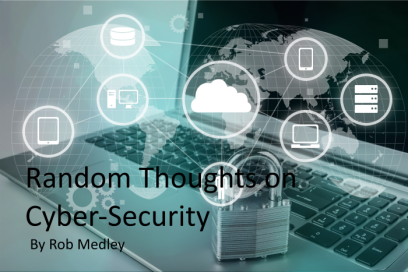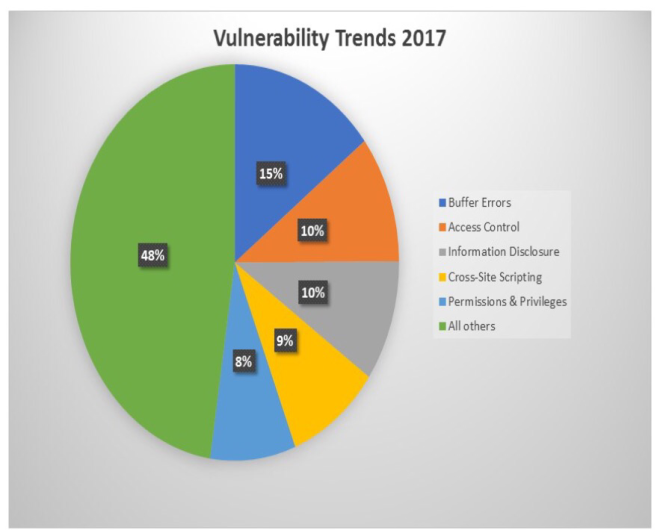According to Forbes magazine, spending on Cybersecurity reached $75 billion in 2015, and is expected to reach $170 billion by 2020[i]. Expected growth areas include security analytics and threat intelligence, each expected to grow 10 percent; governance, risk and compliance by 14%; mobile security by 18 percent, and cloud security by a whopping 50%.
As the world moves increasingly online, cybersecurity can only be expected to continue this growth pattern well beyond 2020. Evolutions in cyber-attacks have driven the expansion of these technology sectors. For example, in 2014, businesses reported 42.8 million detected attacks world-wide[ii]. The United States Government has responded to the rise in computer attacks by establishing programs to create cyber-warriors, such as CyberCorps®, policy initiatives such as the National Cybersecurity Framework, and huge investments in security research and development via the Office of Science and Technology Policy (OSTP)[iii].
And yet, the United States remains behind the eight-ball with regards to security of our networks and critical data. China, with its corps of 100,000 dedicated hackers[iv] , repeatedly out maneuvers the U.S. on the cyber-playfield. According to Michael McConnell, former Director of National Intelligence under President Bush, the Chinese “have penetrated every major corporation of any consequence in the United States and taken information. We’ve never, ever found Chinese malware.” Considering the opposition we are up against as a nation – China, Russia, Iran with extensive cyber-programs; allies who sweet talk us but are digging in our cyber-trash at the same time, terrorists bent on our destruction, for profit hackers, and joy-riding script-kiddies – we need every cyber-warrior we can get our hands on.
So how is America doing in increasing our IT forces? Honestly, not so well. CyberCorps®, the national program to increase our cadre of professionals, has only produced 1, 500 graduates. That’s a paltry number considering that China has penetrated and downloaded “the entire contents of the Pentagon’s mainframe computers at least seven times,” and an NSA review of CIA computers revealed approximately 1,500 pieces of installed malware; at least according to a source that may or may not be Gen. Keith B. Alexander, most recently head of U.S. Cyber Command[v].
This is not to say that we as a nation are not trying, we are, but we can be doing a lot more. Aside from increasing throughput in cyber-programs at American universities, boosting Science, Technology, and Math (STEM) programs, and throwing more money in general at the problem, business and government leaders can utilize the resources right under their noses – those cyber-warriors suffering from mental health disabilities.
We all know that there is racial, gender and sexual discrimination in all aspects of society, the news outlets can’t stop reporting on these. Yet, there is another group that suffers discrimination as much, if not more than others – those with mental illness. You may be tempted to say, “Ridiculous, there is no discrimination like that!” I’m here to change your mind. I’m one of the depressed masses.
Before I tell you my experience of being a jobless cyber-knowledgeable, degreed and superfluously certified professional, allow me to regale you of the population in general. People with mental illness account for about six percent of the total population, and among this monolithic group are subsets of bi-polar, schizophrenic, and just plain depressed people. We don’t like to be grouped together, and are kind of at odds with each other as far as the direction of our awareness cause. The schizophrenics always want to count all of their personalities, while the manic-depressives think big, but are gone when we make up the flyers. It ends up being something like a Monty Python sketch.
Despite of this, mental illness awareness is starting to gain traction nationally; we even have our own month now! Although response is growing, people with the disease still face more discrimination than the LGBTQ community. After all, if someone is ‘mentally ill’, they have to be a loner, packing stacks of firearms in their basements, waiting for the right moment to explode – it’s the same subconscious narrative people get when someone of Muslim origin gets on a train and is sporting a backpack. Both stereotypes could not be further from the truth, but in an age of people getting their news from social media, and establishment journalism itself languishing in a perpetual funk, the narrative is hard to change.
Indeed, people with mental illness, such as major depression, are five times as likely to be unemployed[vi] verses their ‘normal’ counterparts. As of 2006, that translates to 60% of working age adults with mental health disabilities likely to be out of work, verses 20% in the non-disabled population. One in three job applicants with mental health disorders reported being turned down for a job outright or being downsized once their mental health history was known. Of course, the government has programs in place to prevent discrimination, such as the Americans with Disabilities Act, and ‘Schedule A’ employment opportunities, but they do not work once human bias enters the equation. There is always something that an employer can use to disqualify an applicant; lack of experience, closing the position, etc.
In my own case, I have applied for approximately 500 jobs since I left the Navy in 2014; after 22 years of service. I suffer from major depression. I’ve been in regular treatment since 2012 but have been on and off through the system since about 2002. I’m highly skilled, have an impressive work history, speak a few languages, have advanced degrees in Cybersecurity and Strategic Intelligence, as well as the obligatory technical certifications. Looking at me, you wouldn’t guess I have major depression, because I’m at my most vulnerable when I’m alone with my mental merry-go-round of a subconscious narrative. I smile, I laugh, and I’m an outstanding leader (if you ask people who have worked for me) – so why is it so difficult to get a job? Moreover, why is it so hard to get a job in a critical sector? After all, I have a TS clearance that’s valid – there is absolutely no reason for me to not be working.
If you surf the government clearing house for jobs (USA Jobs), you’ll see tons of jobs for cyber, but it’s to the point now where I don’t cry (figuratively) anymore when I get the ‘lacking requisite experience’ rejection for the job that describes me to a ‘T’. Why? I realize my error. I tell people up front I suffer from major depression. Honesty, it’s a weakness…. I guess doing that makes the life of the HR guy easier – you’re welcome, but you’re doing a disservice to your organization and your country.
Exclusion from the work force does a lot of damage to both the person with mental health disabilities and the economic fabric of the country. Exclusion “creates material deprivation, erodes self-confidence, creates a sense of isolation and marginalization and is a key risk factor for mental disability.”[vii] In short, employer bias is making us crazier, forcing us onto Social Security and other programs (full disclosure, I’m on neither) when they could attempt to see past the narrative and employ cyber-professionals that want to work, want to be a contributing member of society, and could be that person who stops the eight full download of Pentagon computers by the Chinese military.
Maybe tomorrow when you get to work, go through those applications you’ve rejected due to bias. You’ll be doing your part to make the world a better place, decrease homelessness and public assistance, reduce your taxes (got your attention, right?), and most important, you’ll be getting an employee that will work harder than your normal ones.
Rob Medley is a starving artist and cybersecurity expert writing blogs after midnight to pass the time.
[i] Morgan, S. (2015, December 20). Cybersecurity Market Reaches $75 Billion In 2015; Expected To Reach $170 Billion By 2020. Retrieved June 02, 2016, from http://www.forbes.com/sites/stevemorgan/2015/12/20/cybersecurity-market-reaches-75-billion-in-2015-expected-to-reach-170-billion-by-2020/#17b09c962191
[ii] Lingenheld, M. (2015, April 27). The Unfortunate Growth Sector: Cybersecurity. Retrieved June 02, 2016, from http://www.forbes.com/sites/michaellingenheld/2015/04/27/the-unfortunate-growth-sector-cybersecurity/#7080e9205a7e
[iii] Presidential Policy Directive — Critical Infrastructure Security and Resilience. (2013, February 12). Retrieved June 02, 2016, from https://www.whitehouse.gov/the-press-office/2013/02/12/presidential-policy-directive-critical-infrastructure-security-and-resil
[iv] Lingenheld, M. (2015, April 27). The Unfortunate Growth Sector: Cybersecurity. Retrieved June 02, 2016, from http://www.forbes.com/sites/michaellingenheld/2015/04/27/the-unfortunate-growth-sector-cybersecurity/#7080e9205a7e
[v] Thomas, J. (2016, June 02). The 10 Baggers In Cybersecurity. Retrieved June 02, 2016, from http://seekingalpha.com/article/3979451-10-baggers-cybersecurity
[vi] Stuart, H. (2006). Mental Illness and Employment Discrimination. Retrieved June 03, 2016, from http://www.medscape.com/viewarticle/542517_2
[vii] Stuart, H. (2006). Mental Illness and Employment Discrimination. Retrieved June 03, 2016, from http://www.medscape.com/viewarticle/542517_2


